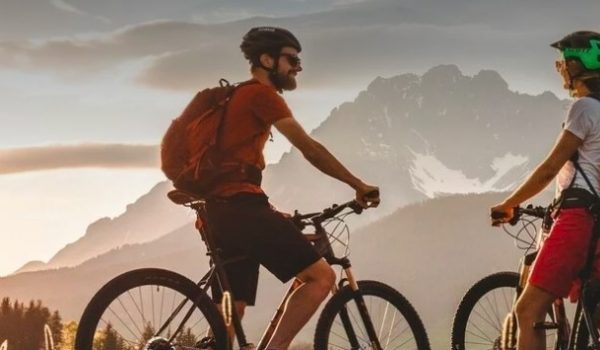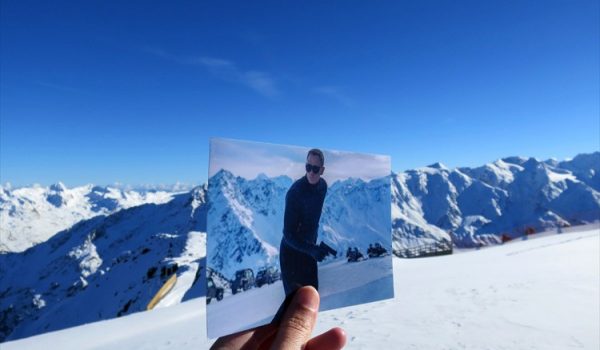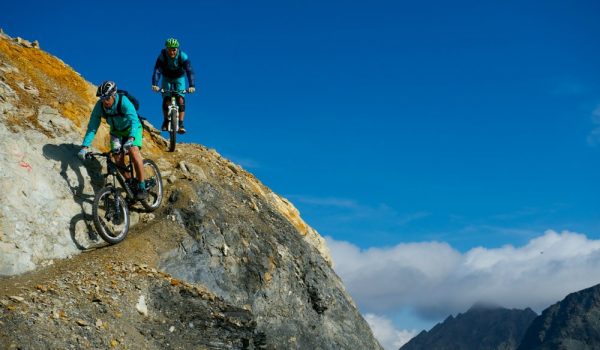The Danube Cycle Path (Donau Radweg) is one of the most iconic and beloved cycling routes in Europe, stretching over 1,200 kilometers from the river’s source in Germany’s Black Forest to its delta on the Black Sea. In Lower Austria, the path carves a stunning 330-kilometer journey through the heart of the region, offering cyclists a perfect blend of natural beauty, cultural heritage, and accessible riding. This article provides an in-depth exploration of the Danube Cycle Path in Lower Austria, covering everything a cyclist needs to know—trail conditions, practical tips, historical significance, fascinating facts, and highlights along the way. Whether you’re a casual rider, a gravel bike enthusiast, or a long-distance bikepacker, this route promises an unforgettable adventure.
Overview of the Danube Cycle Path in Lower Austria
The Lower Austrian stretch of the Danube Cycle Path begins at the border with Upper Austria near Passau and winds its way eastward through rolling hills, historic towns, and lush river valleys, eventually reaching the outskirts of Vienna and continuing toward Slovakia. Predominantly flat and well-marked, this section is renowned for its accessibility, making it suitable for cyclists of all ages and fitness levels. While the majority of the path is paved, there are gravel and dirt sections—especially along quieter detours—making it a versatile option for gravel bikes as well as traditional touring or hybrid bikes.
Key Stats
- Distance in Lower Austria: Approximately 330 km (Passau to Hainburg, near the Slovak border).
- Difficulty: Easy to moderate (mostly flat with occasional gentle climbs).
- Surface: 80–90% paved asphalt, 10–20% gravel or dirt paths (varies by section).
- Duration: 3–7 days for the full Lower Austrian stretch, depending on pace (day trips also popular).
- Best Time to Ride: April–October (peak season: May–September).
Trail Description and Route Highlights
The Danube Cycle Path in Lower Austria follows the river’s northern and southern banks, with well-signed paths allowing riders to switch sides via bridges or ferries. Below are the standout sections and highlights along the route:
1. From Passau to Grein: The Gateway to Lower Austria
- Distance: ~40 km to the Lower Austrian border.
- Terrain: Flat, paved paths with riverside views.
- Highlights: Entering Lower Austria, cyclists pass the dramatic Schlögen Loop, where the Danube makes a sharp 180-degree bend framed by forested cliffs. The small town of Grein, with its historic theater (Austria’s oldest still in use) and castle, marks an early stop for exploration.
2. The Wachau Valley: A UNESCO Gem
- Distance: ~40 km (Melk to Krems).
- Terrain: Mostly flat with some gentle inclines; paved and gravel options.
- Highlights: The Wachau Valley is the jewel of the route, a UNESCO World Heritage site famed for its terraced vineyards, apricot orchards, and medieval villages. Start in Melk, where the towering Baroque Melk Abbey perched above the river is a must-see. Pedal through Spitz and Weissenkirchen, charming wine towns, before reaching Dürnstein, where Richard the Lionheart was famously imprisoned in the 12th century. The castle ruins here offer a short detour with panoramic views. End this stretch in Krems, a bustling cultural hub with museums and wine cellars.
3. Tulln to Vienna: The Urban Approach
- Distance: ~65 km.
- Terrain: Flat, predominantly paved with riverside gravel alternatives.
- Highlights: Tulln, known as the “City of Flowers,” boasts beautiful gardens and a Roman history tied to the Danube’s Limes frontier. Further along, the path enters the Donau-Auen National Park, one of Europe’s largest intact floodplain landscapes, teeming with wildlife like herons, beavers, and deer. The route concludes near Vienna, where cyclists can roll into the capital or continue eastward.
4. Vienna to Hainburg: The Eastern Frontier
- Distance: ~50 km.
- Terrain: Flat, mixed paved and gravel paths.
- Highlights: Leaving Vienna, the path skirts the edge of the Lobau, a forested wetland featured in The Third Man. The medieval town of Hainburg, with its fortified walls and castle, marks the end of the Lower Austrian stretch near the Slovak border, offering a glimpse into the region’s turbulent past.
Practical Information for Cyclists
Trail Conditions
The Danube Cycle Path is meticulously maintained, with smooth asphalt dominating most sections. Gravel and dirt paths appear along quieter stretches or detours, particularly in the Wachau Valley and Donau-Auen National Park, adding variety for gravel bike riders. Signage is excellent—look for green “Donauradweg” signs—and the route is almost entirely traffic-free, using dedicated bike paths or low-traffic rural roads.
Bike Requirements
- Recommended Bike: Touring bike, hybrid, or gravel bike with 35–45mm tires for comfort and versatility.
- Gearing: Flat terrain means single-speed bikes suffice, but multi-gear bikes are ideal for occasional climbs or longer days.
- Extras: Panniers for multi-day trips, a repair kit, and a spare tube are essential.
Accessibility
- Start Points: Major towns like Passau, Melk, Krems, Tulln, and Vienna are accessible by train, with bike-friendly carriages on ÖBB (Austrian Federal Railways).
- Ferries: Small ferries connect the north and south banks (e.g., at Spitz or Weißenkirchen), often accommodating bikes for a small fee (€2–5).
- Bike Rentals: Available in larger towns like Krems and Melk, with e-bike options increasingly popular.
Accommodation and Food
- Lodging: Options range from campsites and guesthouses to upscale hotels, many labeled “Bett+Bike” (bike-friendly). Book ahead in summer, especially in the Wachau Valley.
- Cuisine: Refuel with regional specialties—Wachau apricots, fresh fish from the Danube, and local wines like Grüner Veltliner. Heurigen (wine taverns) dot the route, offering hearty meals like schnitzel or roast pork.
Weather and Timing
- Spring (April–June): Mild temperatures (15–20°C), blooming landscapes, fewer crowds.
- Summer (July–August): Warm (25–30°C), peak season with bustling towns; early starts beat the heat.
- Autumn (September–October): Cooler (10–20°C), golden foliage, harvest season for wine and fruit.
- Winter: Possible but chilly (0–5°C), with potential snow or ice.
Historical Significance
The Danube has been a lifeline for civilizations for millennia, and its banks in Lower Austria tell a rich story. The river served as the northern frontier of the Roman Empire, with remnants like the Carnuntum archaeological site near Hainburg showcasing forts and amphitheaters from the 1st century AD. Medieval castles, such as those in Dürnstein and Aggsbach, reflect the region’s feudal past, while the Baroque splendor of Melk Abbey highlights the influence of the Catholic Church in the 17th and 18th centuries. The Wachau Valley’s terraced vineyards date back centuries, a testament to the area’s enduring wine-making tradition.
During World War II, the Danube was a strategic waterway, and its bridges were heavily contested. Today, the peaceful path belies this turbulent history, offering a serene journey through time.
Interesting Facts
- Europe’s Second-Longest River: The Danube spans 2,850 km across 10 countries, second only to the Volga.
- Wachau’s Apricot Legacy: The region produces 80% of Austria’s apricots, celebrated in jams, dumplings, and schnapps.
- Richard the Lionheart’s Ransom: Captured in Dürnstein in 1192, the English king’s ransom reportedly funded Austria’s medieval expansion.
- Wildlife Haven: The Donau-Auen National Park hosts over 700 plant species and 100 bird species, a biodiversity hotspot.
- Cycling Boom: Over 400,000 cyclists ride the Lower Austrian section annually, making it one of Europe’s busiest bike paths.
Tips for an Enjoyable Ride
- Navigation: Download maps via Komoot or pick up the official Danube Cycle Path guidebook. Signs are reliable, but a GPS helps for detours.
- Pace Yourself: Aim for 40–60 km per day to enjoy stops at abbeys, castles, and taverns.
- Safety: Wear a helmet, use lights for tunnels (rare but present), and watch for pedestrians in busy areas like Krems.
- Pack Light: Water, snacks, and sunscreen are key; refill points are frequent in towns.
Why Ride the Danube Cycle Path?
The Danube Cycle Path in Lower Austria combines convenience with wonder. Its flat terrain welcomes beginners, while the cultural and natural riches captivate seasoned cyclists. From the fairy-tale villages of the Wachau to the wild beauty of the Donau-Auen, every pedal stroke reveals a new layer of this historic region. Whether you’re sipping wine in a Heuriger, marveling at a Roman ruin, or simply soaking in the riverside serenity, this route offers a cycling experience that’s as rewarding as it is accessible.
For detailed maps, accommodations, or guided tours, visit the Lower Austria tourism site (lower-austria.info) or the Danube Cycle Path portal (donauradweg.at). Grab your bike and let the Danube guide you through one of Europe’s most enchanting landscapes!















Follow Us